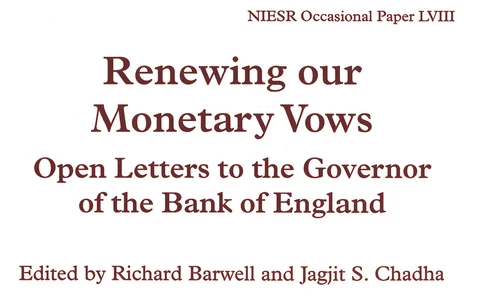Zero lower bound
BoE paper offers solution to ‘paradox of flexibility’
Using shadow rate can avoid anomalous results at zero lower bound, authors say
Carbon tax could help monetary policy – ECB paper
But tax will only improve welfare if alternatives to carbon-based power are available, say researchers
RBNZ hints at further stimulus by the end of the year
Central bank says banking sector is on track to be prepared for negative rates
Rising debt has weakened eurozone – Bank of Spain paper
Highly indebted countries face lower output and limited ability to respond to crises, researchers say
Book notes: The menace of fiscal QE, by George Selgin
Much of this book is even more relevant, thought-provoking and important following Covid-19
IMF research highlights limits of exchange rate flexibility
New dataset sheds light on role of dominant-currency invoicing for exchange rate dynamics
Trends in reserve management: 2020 survey results
Covid-19 expected to dent the risk appetite of central bank portfolio managers; socially responsible investing gains ground
ZLB reduces effectiveness of bank capital ratios – ECB paper
Capital ratios become less effective in reducing risky behaviour when rates are near zero – researcher
Researchers say hitting lower bound has little impact on expectations
Persistent deviation from inflation target can still undermine long-term expectations, authors say
Raising inflation targets may lower neutral rate – Boston Fed paper
A higher target might therefore be less effective than current research suggests, research says
Fed promises to keep buying assets at current rate
Fed will hold accommodation in place for “however long it takes”, chair Jerome Powell says; FOMC releases first projections this year
Bundesbank paper looks at effective lower bound
Modellers can use survey information to reduce impact of ELB on yield decompositions, author says
Campos Neto on reforming Brazil’s economy amid Covid-19 distress
The Central Bank of Brazil governor speaks about how Brazil is managing fallout from the coronavirus pandemic, the benefit of large reserves, his plans to deploy emergency asset purchases and why he favours extending the IMF’s SDR funding
Fed could exploit helicopter money with digital currency system – former officials
Simon Potter and Julia Coronado propose recession insurance bonds, consumer QE and Fed-backed digital currency as crisis tools
Fed set to adopt ‘elements’ of price-level targeting
Covid-19 could act as a catalyst for a Janet Yellen-supported Fed move to adopt elements of price-level targeting. But questions remain about the timing of such a move
Book notes: Renewing our monetary vows, by Richard Barwell and Jagjit Chadha
Open letters to the governor of the Bank of England, as new chief Andrew Bailey takes over
More frequent ELB events cut inflation expectations – San Fran Fed
Household and businesses change spending and pricing behaviours, researchers say
IMF’s Gopinath advises central banks on cocktail of measures to fight virus
IMF chief economist says central banks should stand ready to provide liquidity
Fed makes surprise rate cut
Move against coronavirus marks largest rate change since the 2008 financial crisis
Above-target inflation ‘essential’ for dual mandate – Chicago Fed’s Evans
Evans is second senior Fed official to back new inflation-targeting approach in recent weeks
Do low rates spur investment?
Many believe low interest rates spur investment, but there appears to be little hard evidence to support such claims, writes former IMF head Jacques de Larosière
Book notes: The long journey of central bank communication, by Otmar Issing
This book is a “masterly exposition on central bank communication, its evolution and continuing challenges”, writes Anand Sinha
Canada’s Poloz on monetary policy limits, transparency and cyber recovery
Bank of Canada governor Stephen Poloz speaks about stagflation risks from trade wars, the importance of market signals, Canada’s CBDC plans and why he is not a fan of minutes
Risk of hitting ZLB in the future reduces inflation today – Fed paper
Policy-makers could use “risk-adjusted policy rule” to offset risk of undershooting, researchers say






















